Android Pie: Google adds Digital Wellbeing controls
- Published
WATCH: Android's Andrei Popescu shows off greyscale mode and other new features
Android Pie - Google's latest version of its mobile operating system - has been released.
The software introduces a new way, external to track usage of apps on a smartphone or tablet and lets limits be set, including the removal of colour from the screen at a chosen time of the day.
The ninth edition of Android also offers more powerful notifications and promises to extend battery life.
But Google continues to face issues with the distribution of its updates.
According to its own figures, only about 12% of in-use Android devices were running the previous version, external - Oreo - as of a fortnight ago.
Google says that it has worked with third-party device-makers to make it easier for them to check and deliver the updates than before.
But for now, the new upgrade is only being made available to its own Pixel phones.
Why Pie?
Google always picks a dessert or confectionery-based nickname for its mobile OS, shifting one letter along the alphabet each time.
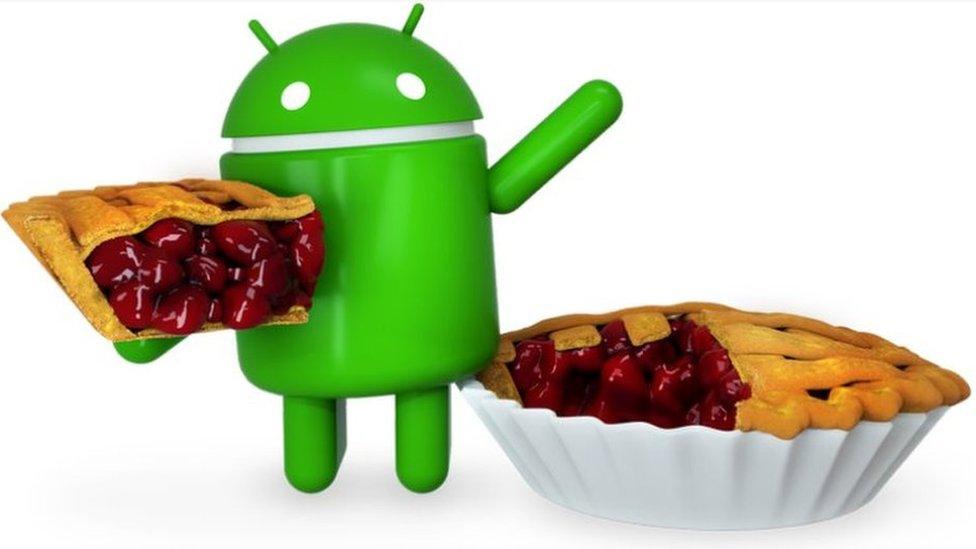
Google says other manufacturers should release updates to Android Pie in the autumn
Past examples have included Jelly Bean, Kit Kat, Lollipop and Marshmallow.
There had been speculation that the next name could be Pistachio Ice Cream, Pop-Tart or Pumpkin Pie.
But the chief of Android's London engineering team explained that there had been a deliberate decision to keep things simple.
"It hints at the same goals we have with Android in general," said Andrei Popescu.
"We want to simplify the user interface, we want to make the usage simpler and more intuitive.
"And I think that kind of resonates with a very simple and beautiful name like Pie."
Will it really make me use my phone less ?
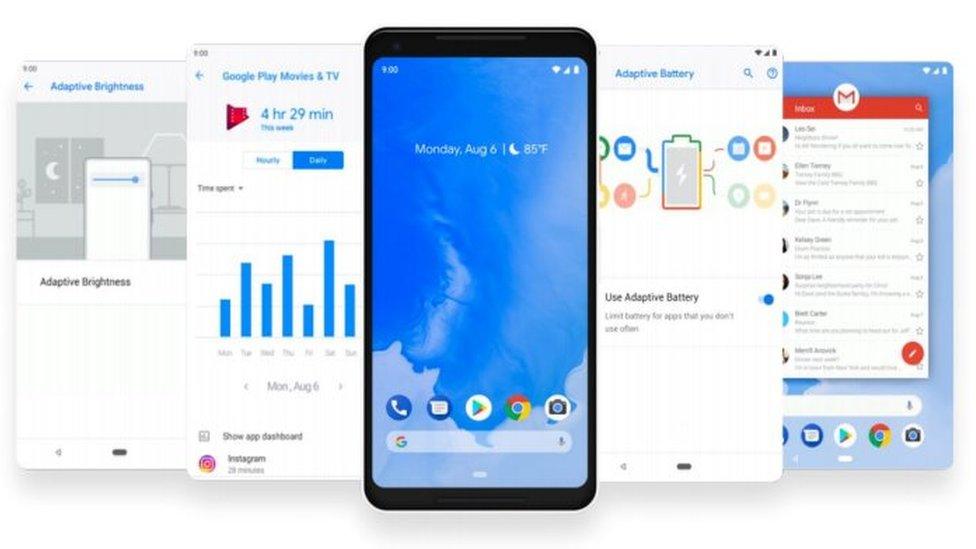
One of the new software's headline features is its new Digital Wellbeing controls.
These are in part a response to criticism that smart devices can be "addictive" and disruptive to our sleep patterns.
A dashboard provides ways to see how much time the owner has spent using their device, with a breakdown of the hours and minutes dedicated to their most popular apps.
Timers can then be set to limit usage of specific programs.
When the limit nears, users get a warning - and when it is reached the app's icon becomes greyed out to prevent it from launching. The lockout can, however, be overridden.
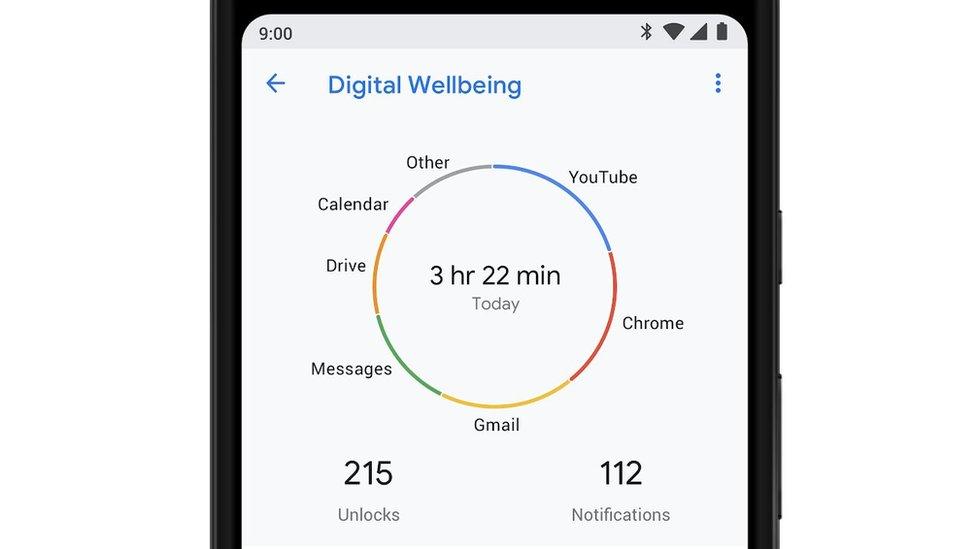
The Dashboard provides owners several ways to visualise their device use
Wind Down Mode is intended to act as a further prompt to put down the device at the end of the day.
At a pre-selected time, the screen switches from colour to greyscale - meaning all imagery is seen in shades of grey. In addition, the Do Not Disturb mode is activated, silencing incoming calls and alerts.
Apple is introducing its own Screen Time controls to iOS 12 with a similar goal.
But one physiologist said adults and children alike must be educated about the benefits of the new facilities to ensure they are widely adopted.
"These are good measures, but there are still going to be a lot of people who don't think they have a problem," said Dr Nerina Ramlakhan, author of Fast Asleep, Wide Awake.
"So, there will still need to be a lot done to educate people about the pitfalls of becoming unhealthily dependent on the use of their phones and apps."
How have notifications been improved?
Pie adds images to the alerts - showing both a small picture of the person who contacted the recipient, when relevant, as well as previews of any photos or other media they may have shared.
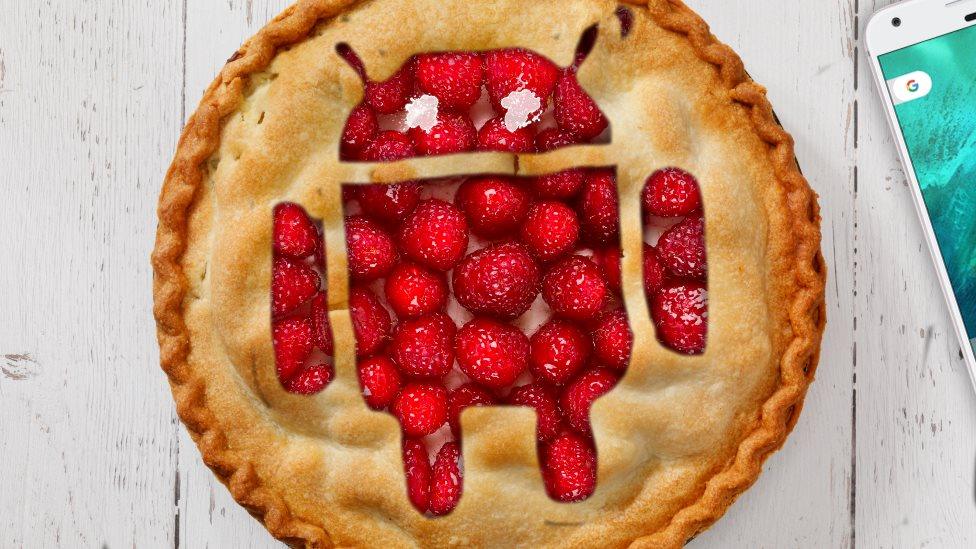
More than 140,00 people volunteered to test the beta versions of Android Pie before its official release
In addition, the operating system will now allow users to reply to received messages via the notifications themselves using a Smart Reply facility.
This will attempt to predict and offer the desired response, allowing the owner to send it without having type it in themselves.
How has Google boosted battery life?
The tech firm has taken a two-pronged approach to the common complaint that devices run out of power too quickly.
Firstly, it has attempted to take advantage of a common feature of modern mobile processors to minimise battery use when the display is turned off.
Many CPU (central processing unit) chips now feature "big-little" architecture, whereby some processor cores prioritise speed while others focus on being more power-efficient.
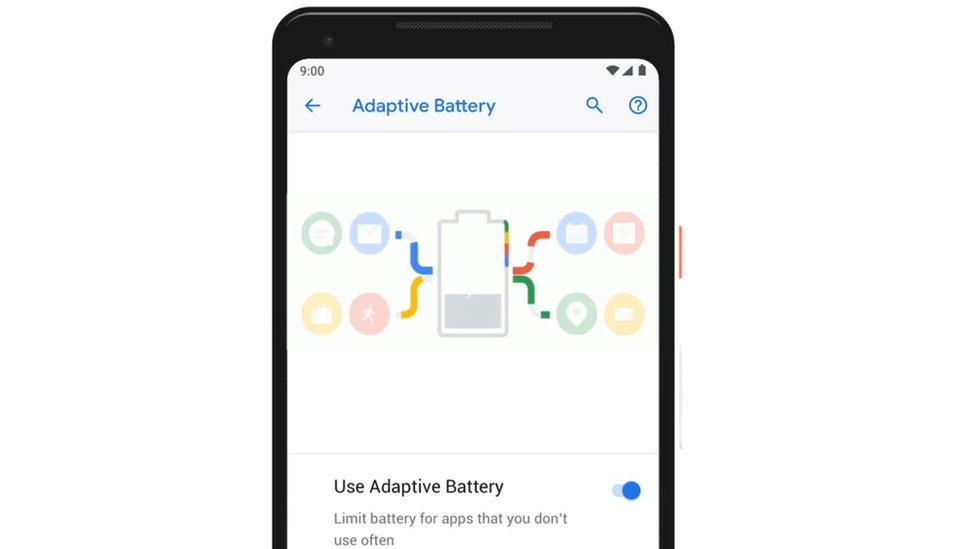
The Adaptive Battery function uses machine learning to decide when apps can carry out background tasks
Android Pie now schedules many of its background processes to run on the more efficient "little" cores in order to consume less power.
The second approach involves trying to prevent what Google describes as "bad battery days".
To do this, the system studies an owner's behaviour in order to anticipate when they will want to use certain apps.
By doing this, it can stop unlikely-to-be-opened apps using the CPU and battery to carry out tasks that could be deferred until later when the device is recharging.
Huawei already offers something similar in some of its phones using its own machine learning techniques.
What else is new?

Slices lets users use apps without having to open them
The other biggest innovation is Slices, which brings parts of an app's user interface to the fore without requiring the owner to open the program.
For example, entering a taxi app's name into the search bar might bring up information about how far away the service's nearest car is and how long it would take to get the user home.
However, this facility is not set to go live until later this year.
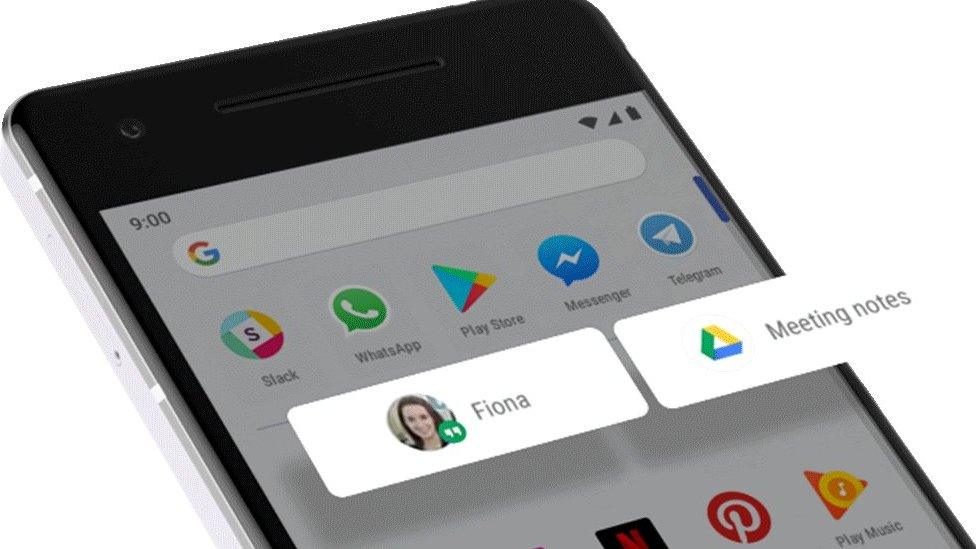
App Actions try to predict what the user will want to do next
Other innovations that will be offered at launch include:
App Actions - an anticipatory function that tries to determine what task the user will want their phone to do next - such as to call a specific contact, show selected notes or play a favourite album. The device then presents a couple of these suggestions near the top of its screen so they can be achieved with a single tap
a screen brightness facility that studies how a user adjusts their display based on their surroundings, and then tries to make the changes automatically on their behalf
new gesture controls to make it easier to switch between apps
- Published6 August 2018

- Published11 May 2018

- Published8 May 2018

- Published21 August 2017
